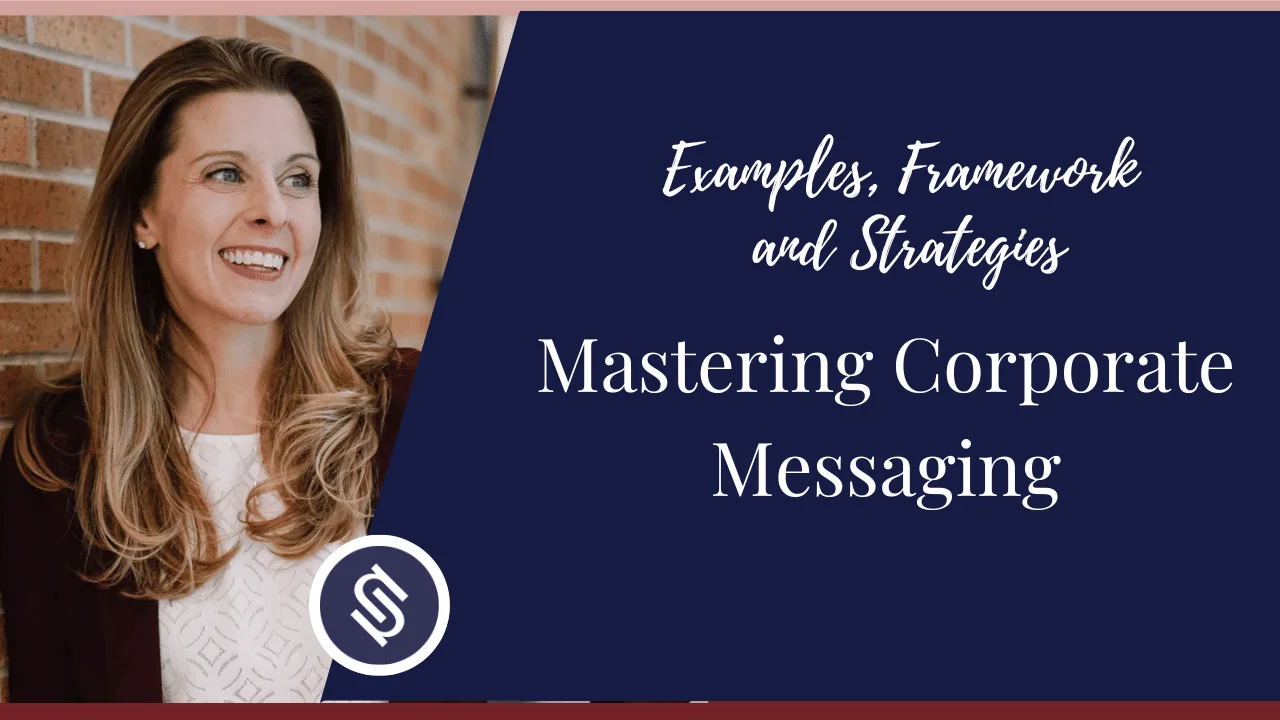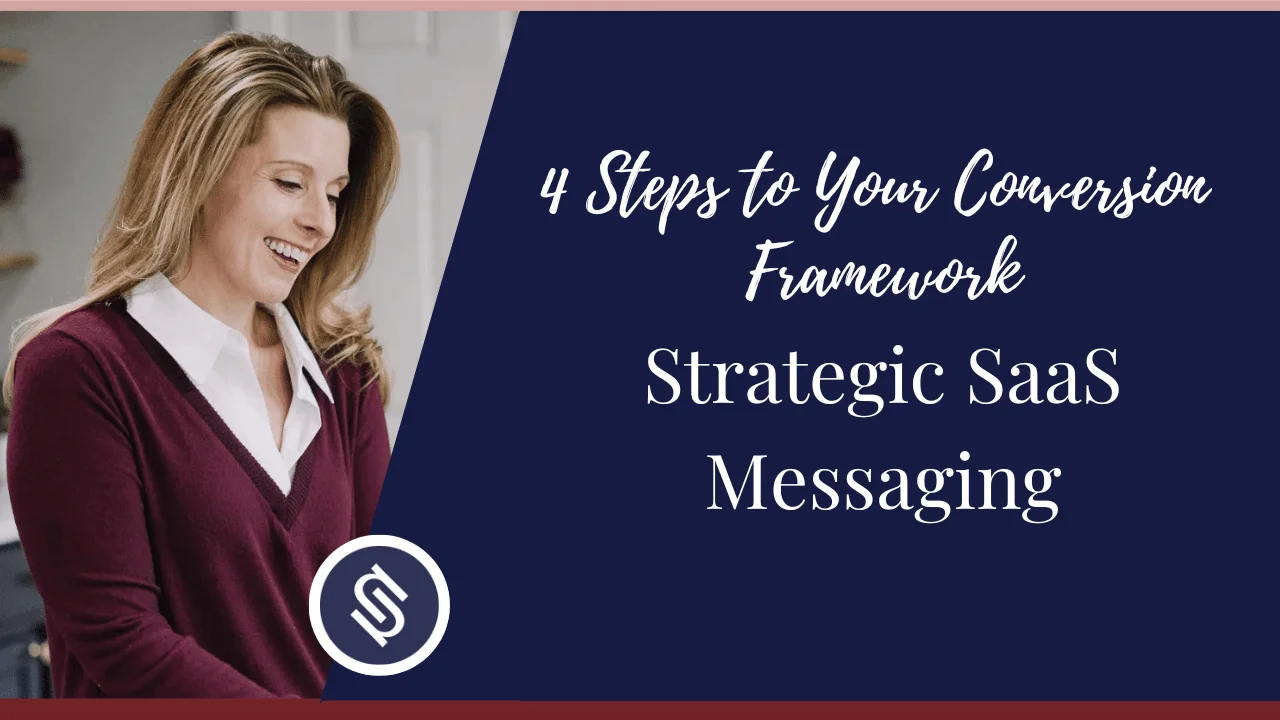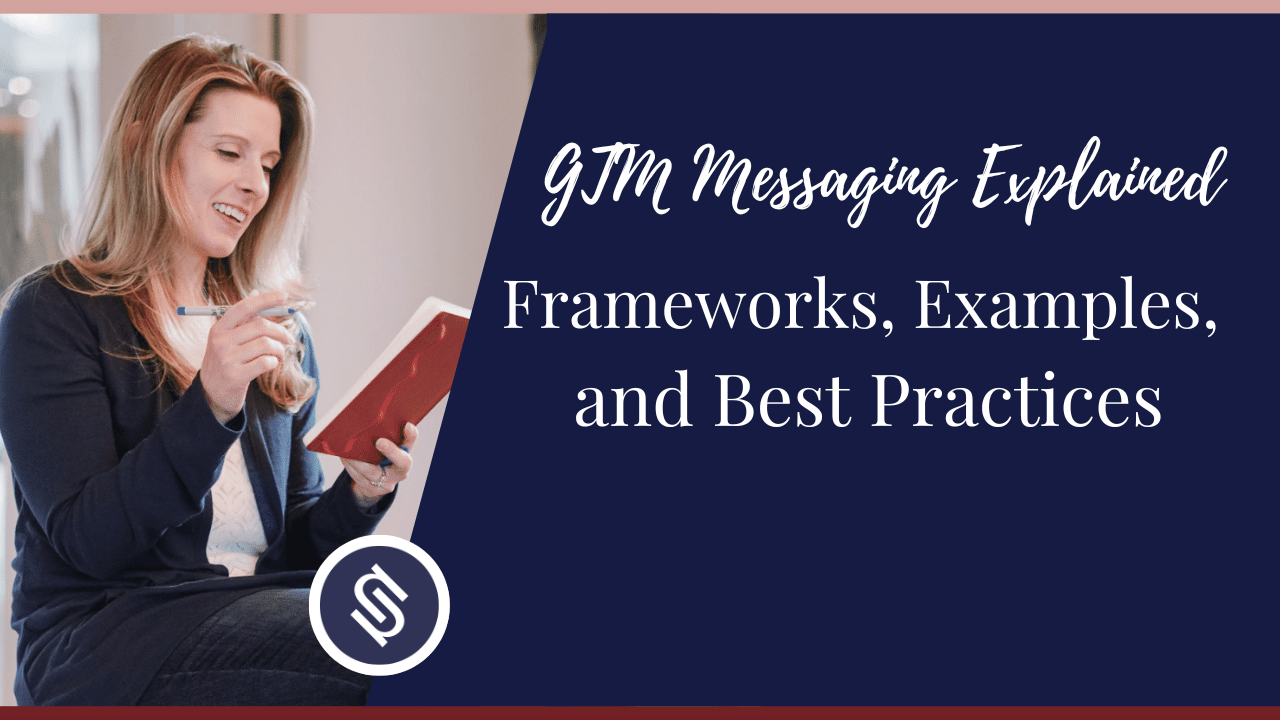In a crowded market, using a marketing messaging matrix helps a business to stand out and makes the communication resonate with ideal customers.
However, many businesses overlook the matrix strategy, and their messaging ultimately fails to engage their audience or encourage conversions.
Read this blog post to discover:
- What a messaging matrix is and how it can help the marketing strategy.
- The core components of developing a matrix.
- How to nail this vital marketing strategy.
A messaging matrix is a tool for keeping your brand messaging aligned with your core value propositions.
As a brand messaging strategist, I can help you define what makes your brand unique from the competitors. We can also partner to craft clear messages that effectively communicate your brand’s value to your audience.
Book a discovery call, and let’s collaborate to create consistent copy that resonates with your customers.

What is a Messaging Matrix?
A messaging matrix, or message framework, is a tool that organizes and categorizes all the communication with an audience. The framework includes details such as:
- Target audience
- Key messages
- Communication channels
- Content themes
Tables and spreadsheets are the most common forms of a matrix. They facilitate clear organization, are simple and easy to use, and can be easily updated.
Alternatives to simple tables include infographics, mind maps, or flowcharts. These visual formats can enhance understanding and engagement, especially with the more complex message frameworks or when communicating strategies to broader audiences.
What Purpose Does it Serve?
Although a matrix is primarily a strategic tool in communications and marketing, it serves multiple purposes:
1. Clarity and Intention
The matrix shows the entire communications plan at a glance:
- What messages do brands communicate
- To which audience segments
- Through which channels
Keeping each piece of communication targeted and purposeful helps avoid confusion.
2. Alignment and Consistency
This communication framework ensures that:
- The messaging is consistent across different channels and platforms.
- It aligns with the overall campaign strategy or brand.
3. Efficiency and Effectiveness
A well-thought-out messaging strategy and matrix streamline the content creation and dissemination processes. It redefines how brands organize communication, helping it to:
- Promote key messages that improve overall communication retention and impact.
- Provide more agile responses to market changes.
- Better handle resource allocation.

Key Differences Between a Messaging Matrix and a Content Calendar
A messaging matrix and a content calendar work together perfectly in a brand, but they should both have distinct roles.
Here are the differences between the two:
| Aspect | Messaging Matrix | Content Calendar |
|---|---|---|
| Definition | A structured framework that outlines how a brand communicates its key messages across various audience segments. | A planning tool that helps a brand know when or where the content should be published. |
| Purpose | Helps maintain a consistent brand voice across channels to ensure content is aligned and coherent. | Helps to organize, plan ahead, and streamline the content production process. |
| Components | Includes an audience, key messages, brand voice, and value propositions. | Includes topics, deadlines, and publication schedules. |
The Role of Storytelling in a Messaging Matrix
The reason storytelling in a messaging matrix matters to an audience is that it helps the messaging connect deeply with prospects across the buyer’s journey.
Here are the reasons brands should create narratives that matter to the audience:
- Evokes Empathy: When a brand shares stories that are compelling and persuasive, it taps into the emotions of its audience, creating trust.
- Builds Loyalty: Storytelling can give a brand a voice and personality that makes it memorable and relatable.
- Drives Action: A brand that evokes emotional connection makes the audience more likely to engage, buy, or subscribe.
- Aligns with the Customer Journey: Storytelling can provide a consistent experience that takes a prospect from the first point they interact with a brand until post-purchase.

7 Core Components of a Messaging Matrix
There are seven core components of a messaging matrix. Each one plays its part in crafting tailored messages that reach and resonate with the intended audience. Let’s take a look:
1. Objectives or Goals
Objectives guide the entire strategy and influence how to develop the key messages, whom to target, and on which channels.
2. Target Audiences
Understanding the audience segments helps tailor messages that resonate personally and align with the business goals.
3. Key Messages
With a clear understanding of the target audience and objectives, a brand must develop the primary messages it intends to communicate.
4. Content Themes
These broader categories or topics help organize the key messages under a unified strategy, ensuring consistency across channels.
5. Communication Channels
Choosing the communication mediums depends on where the audience segments will most likely be engaged and receptive.
6. Timing and Frequency
Planning when and how often to communicate the key messages helps capture the audience’s attention and maintain engagement.
7. Success Metrics
Defining success through specific, measurable criteria aligned with the goals enables a brand to evaluate the effectiveness of the messaging strategy.
Nailing all these components is both a science and an art. If you’re feeling overwhelmed or looking for guidance on your messaging matrix planning, book a discovery call with me, and I’ll help you gain more clarity.

How to Create Your Brand’s Messaging Matrix (Using the Core Components)
Creating a matrix for messaging can be a time-consuming process. It may take some back-and-forth, and brands learn a great deal as they go. But once it clicks, the brand’s communication will be clear and focused, bringing it closer to its goals.
Here’s a step-by-step guide to developing the brand’s marketing messaging matrix:
1. Define Your Objectives
Start by outlining what a brand wants to achieve with the communication. Objectives can range from raising brand awareness and generating leads to nurturing customer loyalty.
2. Segment Your Audience
Picture the ideal customers: who are they, and what are they like? Consider their age, interests, and what matters to them, and then divide them into groups based on similarities. Try to gauge what kind of message would resonate best with each one.
Audience segmentation defines the entire message framework, so it’s essential to research it thoroughly.
3. Conduct a SWOT Analysis
Take the following quick inventory of a brand in the context of the market:
- What is it good at? (Strengths)
- Where does it have room to improve? (Weaknesses)
- What exciting opportunities are out there? (Opportunities)
- What are the challenges it faces? (Threats)
This SWOT analysis will clarify a brand’s strengths and weaknesses, and guide the strategic direction of its messaging.

4. Develop Key Messages
The key messages are concise statements communicating the most important and compelling aspects of the product, service, campaign, or brand.
Craft these key messages to:
- Align with the overall brand identity and objectives
- Highlight the brand’s unique value proposition
- Resonate with each audience segment
- Address their needs and interests
5. Choose Communication Channels
Identify the most effective communication channels to reach each audience segment, considering their media consumption habits and preferences. These channels or platforms could be:
- Social media
- Your website
- Blogs
- Press releases
- Offline media
6. Plan Content Themes and Types
Organize the key messages under broader content themes that reflect the brand’s story and values. Here are the types of content that can best convey these messages across the chosen channels:
- Blog posts
- Videos
- Infographics
- Case studies
- E-books
- White papers
7. Determine Timing and Frequency
Experiment to determine the optimal times to send messages to each audience segment across various channels.
The communication should sound like friendly reminders rather than a flood of messages. So, space it out and aim to maintain engagement without overwhelming the audience.
8. Set Metrics for Success
Define clear, measurable goals for each key message and channel, such as engagement rates, click-through rates, conversion rates, or social shares. These metrics can help you evaluate the effectiveness of the message framework.

Steps to Audit an Existing Messaging Matrix
Once we create a messaging matrix, the next step is to audit the content, making sure it aligns with the brand. Here are the steps that require strategy and interactive testing.
Define the Brand Audit Goals
Clarify the objectives to help a brand audit the messaging effectively. There should be clearly defined goals, whether it’s to prepare for rebranding or improve customer engagement.
Evaluate the Messaging
Assess how messaging in each channel is performing from the website, social media, content marketing assets, media, and blogs.
The audit can help gain critical insights that can improve underperforming content and reinforce effective messaging.
Measure Customer Experience
Assess how customers are engaging directly with an audience. A brand can use surveys, focus groups, and metrics to gather data on customer interactions, identify customer perceptions, and understand customer feedback.
The data can help a business to make informed decisions to improve customer satisfaction and foster loyalty, strengthening a brand’s reputation.

How Does Audience Segmentation Impact the Messaging Matrix?
Audience segmentation can guide a brand at every level of matrix development, from crafting custom messages to strategically allocating resources. Here are some advantages:
1. Message Customizations
Segmentation helps businesses customize messages to address the particular requirements, preferences, and pain points of different audience groups.
When a brand knows the audience segments in detail, it can create messages more likely to:
- Resonate with each group
- Support the communication goals
2. Strategic Focus
The organization’s strategic goals are more easily accomplished when the right message is delivered to the right audience segment.
Imagine a company looking to promote a new financial planning app. Young professionals are one of the company’s key audience segments. To boost app adoption rates, communication with this segment should emphasize ease of use, mobile accessibility, and long-term financial growth.
3. Channel Optimization
Different audience segments may prefer specific communication channels. Audience segmentation informs the selection of channels in the matrix to ensure effective communication.
For example, younger demographics might be more active on social media platforms, whereas professional audiences might be more accessible via email or LinkedIn.

4. Timing and Frequency Adjustments
Segmentation influences when and how often a brand sends messages. For instance, active professionals typically check messages early in the morning or late at night, whereas retirees tend to check them more frequently and appreciate regular communication.
Based on such preferences and behaviors, a business can tweak the matrix to communicate in a way that optimizes engagement.
5. Feedback Loops for Refinement
As a brand starts delivering messages and observing audience responses, it can analyze all the data at a granular level. It can then use the feedback to refine and adjust the framework, keeping the communication strategies relevant and effective for each segment.
6. Enhanced Personalization
Beyond tailoring the core message, segmentation enables more personalized messaging throughout the framework. The more personalized the communication, the greater the chances it has of reaching the right audience and selling effectively in a crowded market.
It can adjust the tone, language, or content to match each segment’s cultural, linguistic, or demographic characteristics, enhancing the personal connection with individual groups.
7. Budget and Resource Allocation
Understanding the different audience segments can inform resource and budget allocation decisions to achieve maximum impact.
Some segments require more intensive outreach or higher-quality content. Accordingly, a business can plan for all of it and customize the matrix to integrate these segment-wise approaches.

How to Integrate Customer Feedback Into a Messaging Matrix
Integrating customer feedback into the messaging matrix shows the customers that their voice matters and helps build lasting relationships with an audience.
Follow these steps to use feedback for continuous improvement and growth:
Collect and Organize Feedback
Get customer feedback to understand the audience’s preferences, pain points, and expectations.
Gather this feedback through various channels such as surveys, social media listening, customer interviews, and online testimonials.
Create Messaging Pillars
The next step is to pull recurring themes and suggestions and tie them into the core messaging themes.
A brand can prioritize the high-impact areas that can improve customer satisfaction and business growth.
Implement the Feedback in the Messaging
After analyzing the feedback, use the insights to refine the messaging and make it more relatable.
If the clients frequently ask certain questions or mention a specific concern, highlight that in the brand content.

2 Relatable Examples of Effective Messaging Matrices
Let’s look at two hypothetical matrices and the messaging examples to illustrate the concept.
Discover how businesses across various industries can develop effective communication strategies to drive business growth. This approach, which focuses on strategic communication planning and execution, is a key aspect of my work as a growth consultant.
Example 1: Project Management Tool
A SaaS platform that offers project management and collaboration tools might target two main audience segments. The first one can be fast-growing startups, while the second target audience can be mid-sized enterprises.
Here’s how the messaging matrix may look for this company:
| Segment | Fast-growing Startups | Mid-sized Enterprises |
|---|---|---|
| What They Care About | - Easy onboarding and a quick setup - Affordable or free pricing - Features that can scale with their operations | - Scalability with minimal disruptions to their operations - Security measures to protect their customer data - Solutions that allow collaboration across teams |
| How We Reach Them | - Use platforms like LinkedIn to share quick wins from brands that are using the tool - Run free webinars and free trials that are tailored for startups | - Highlight testimonials of other mid-sized companies that already use the software. - Share thought leadership whitepapers and case studies that show measurable results in specific industries. |
| Our Key Messages | - Get your team collaborating in minutes! - Our platform empowers every department with tools that streamline workflows and deliver tangible results | - Our platform evolves with your company's needs! - Get enterprise-level security for all your data. |
Example 2: Health and Wellness App
A health and wellness app may target two primary audiences — people trying to lose weight and those interested in mental health. The messaging matrix of this company may be as follows:
| Segment | People Trying to Lose Weight | People Interested in Mental Health |
|---|---|---|
| What They Care About | - Shed pounds and reach their fitness goals. | - Reduce stress and find inner peace. |
| How We Reach Them | - We keep them motivated with inspirational stories and tips on Instagram. | - We offer guided sessions on YouTube and share expert advice in our newsletter. |
| Our Key Messages | - Track your progress easily with our calorie tracker and create personalized meal plans. - We’ll empower you with the tools and the support you need to get in your best shape. | - Learn practical stress-busting techniques and mindfulness practices. - We’ll help you manage stress and cultivate mindfulness for a happier, healthier you. |
Each messaging matrix example shows how a framework can guide the development of nuanced, audience-specific messages that resonate across various channels, ultimately enhancing the effectiveness of marketing campaigns.
Can a Messaging Matrix Help Align Sales and Marketing Efforts?
One of the most substantial benefits of a matrix is its ability to bridge the gap between sales and marketing teams.
By providing a unified framework for messaging, both teams can ensure they’re speaking the same language when engaging with prospects and customers.
This alignment can maintain consistent messaging and enhance the overall effectiveness of the sales funnel, from awareness to conversion.

What Are the Common Challenges in Implementing a Messaging Matrix?
Despite its benefits, creating and maintaining a messaging matrix comes with some challenges. These can include:
- Consistency Across Channels: Occasionally, the core message may change when adapting the communication for different channels. This change can lead to inconsistent messaging across platforms.
- Adaptability: Factors such as rapid market changes or shifts in audience preferences can make it challenging to adapt the messaging matrix quickly.
- Measurement: Since the matrix encompasses various aspects, such as key messages, target audience, and communication channels, it may be challenging to measure the performance of your matrix.
Overcoming these challenges requires an ongoing review of the matrix. A brand must incorporate regular feedback loops from sales, marketing, and, most importantly, the customers themselves.

Frequently Asked Questions (FAQs)
Got more questions about the brand messaging matrix? Here are quick answers to commonly asked questions on the topic:
How Often Should a Messaging Matrix Be Updated?
A brand should update its messaging matrix every 6 to 12 months as part of its marketing review.
However, it can be updated sooner if a brand is launching a new product, receiving customer feedback, experiencing a change in competitors’ positioning, or targeting a new audience segment.
What Tools Can Help Manage a Messaging Matrix Effectively?
Here are some tools that can help in a messaging matrix:
- Notion or Airtable
- Asana, Trello, and ClickUp
- Miro and Crayon
Can a Messaging Matrix Work for Small Businesses?
Yes, a messaging matrix can be more impactful for small businesses. It can help:
- Clarify the value proposition
- Act as a reference point for all marketing
- Keep the messaging aligned across various channels
What Is the Best Way to Measure the Success of a Messaging Matrix?
The best way to measure whether a message lands with an audience is to monitor engagement metrics, conversion rates, and run message testing.
Conclusion
Brands need a strategic approach to cut through the noise and connect with an audience on a deeper level. This approach requires that a business clearly define its objectives, segment its audience, develop key messages, and more.
Use the practical steps outlined in this blog to get started with messaging matrices.
Need some personalized guidance? As a messaging strategist and business coach, I’m ready to help you level up any communications task or project.
Book a discovery call to share more about your specific needs so that we can tailor the messaging matrix to your company’s unique requirements.





